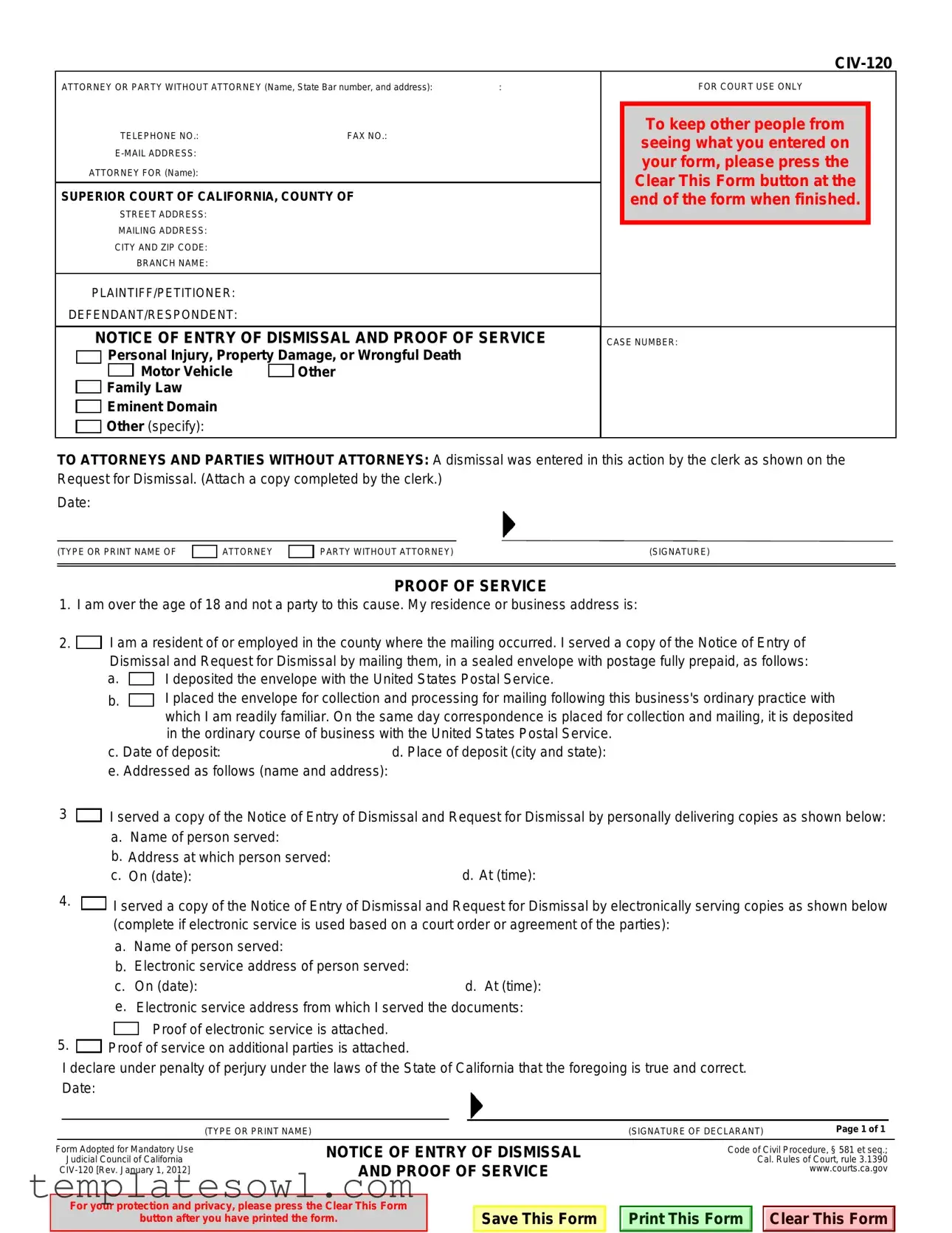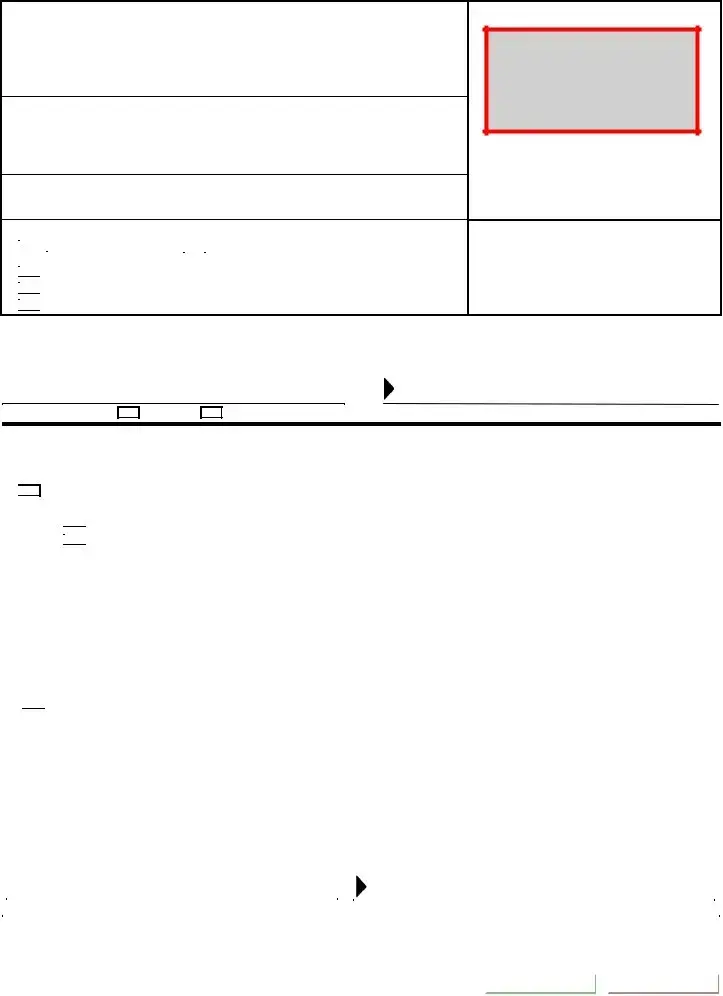Filling out the CIV-120 form, which serves as a Notice of Entry of Dismissal and Proof of Service, can be straightforward, but many people make key mistakes that can delay processing. Understanding these errors is essential to ensure that your submission is accurate and complete.
One common mistake is failing to include essential contact information. The form explicitly requires you to provide your name, telephone number, and address. Omitting any of this information can lead to confusion and may result in delays as the court tries to contact you. Double-checking this section before submission can save time.
Another frequent error is not signing the form. A signature is not just a formality; it confirms that you are the individual submitting the document and believe the information provided is accurate. Without your signature, the form can be deemed incomplete, leading to potential complications in your case.
Inaccuracies in the case number also pose a problem. Many individuals misplace or incorrectly enter the case number. This can cause the court to misfile your documents or fail to associate them with the appropriate case. Always ensure that the case number is correct and matches what is on court documents.
People also often forget to attach the completed Request for Dismissal. This document provides the foundation for the Notice of Entry of Dismissal and verifies that a dismissal has indeed been entered. Without it, your form may not be processed as intended.
A fifth mistake is incorrectly filling out the Proof of Service section. This part outlines how you communicated the Notice of Entry of Dismissal to involved parties. Ensure that all details regarding the method of service, the name of the person served, and the dates are filled out accurately. Missteps in this section can lead to challenges regarding the validity of the service.
Finally, many overlook the importance of keeping a copy for personal records. After submission, it’s wise to have a copy on hand for reference later. This can be crucial in case any disputes arise about whether the form was properly submitted.
By being aware of these common mistakes when filling out the CIV-120 form, individuals can enhance their chances of a smooth and efficient filing process. Careful attention to detail is vital in legal matters, and it pays to take the time to do it right the first time.





 Personal Injury, Property Damage, or Wrongful Death
Personal Injury, Property Damage, or Wrongful Death
 Motor Vehicle
Motor Vehicle  Other
Other Family Law
Family Law 


 Eminent Domain
Eminent Domain





 I deposited the envelope with the United States Postal Service.
I deposited the envelope with the United States Postal Service. I placed the envelope for collection and processing for mailing following this business's ordinary practice with
I placed the envelope for collection and processing for mailing following this business's ordinary practice with I served a copy of the
I served a copy of the  I served a copy of the
I served a copy of the